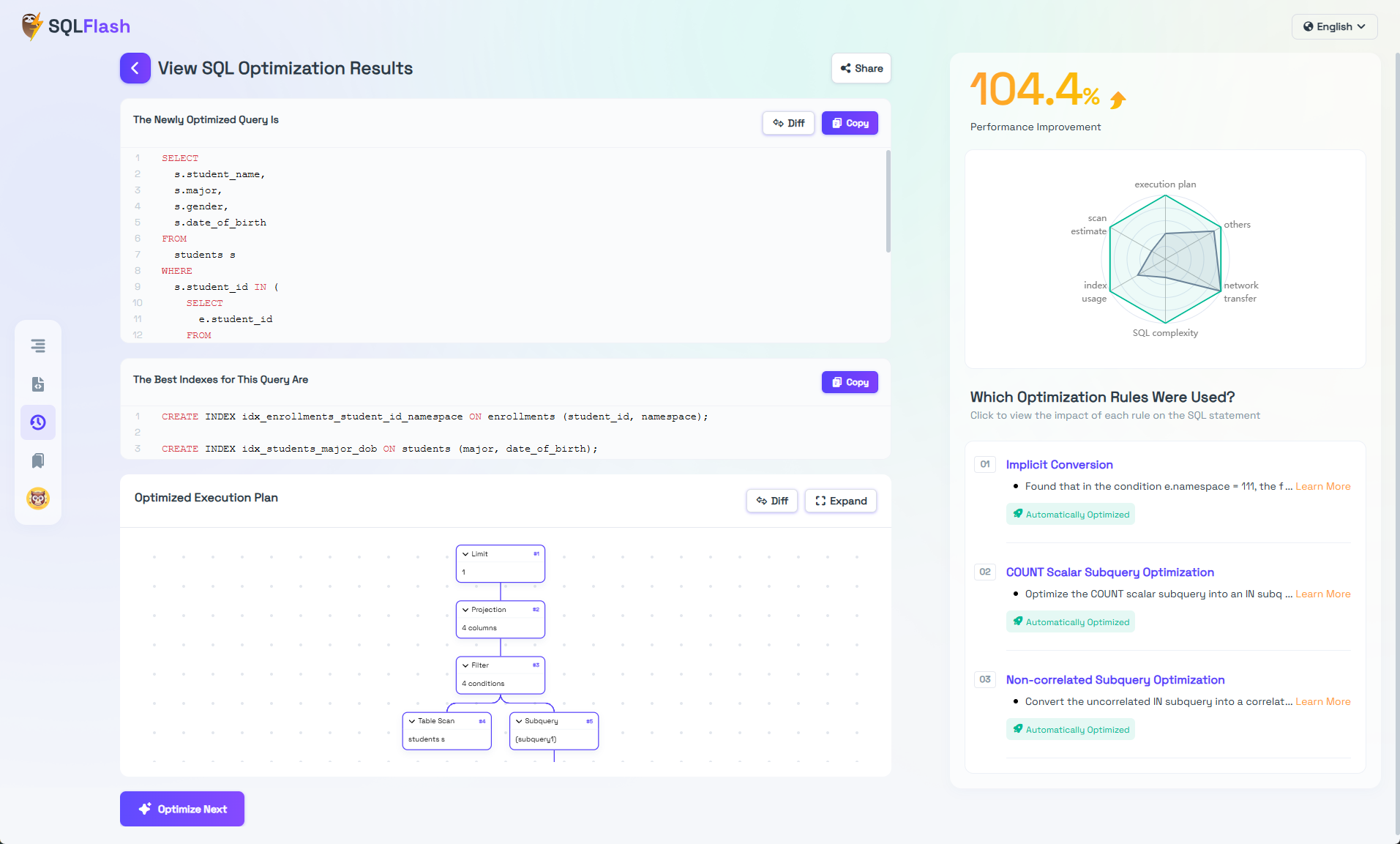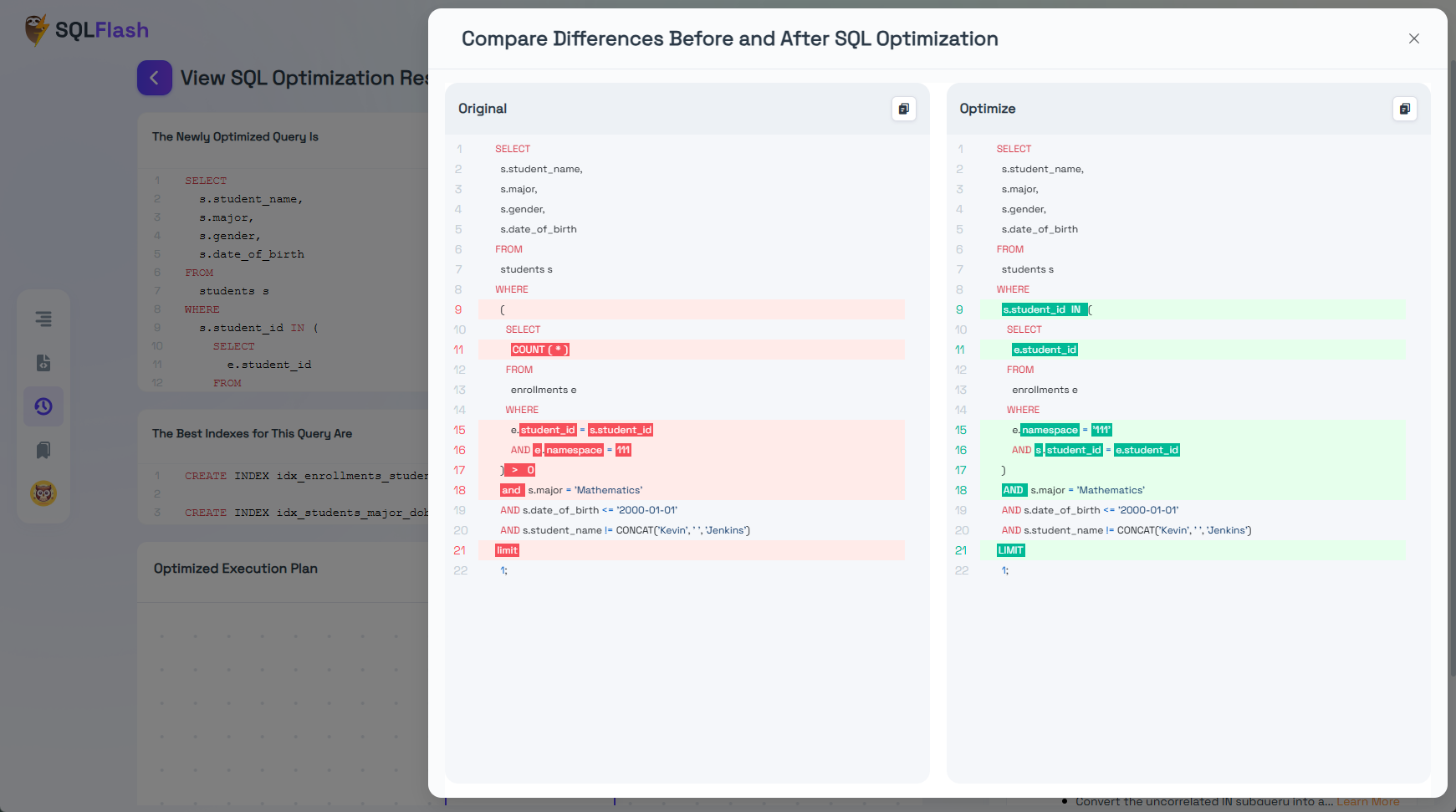MySQL+SQLFlash
In just one minute, discover how SQLFlash identifies and enhances SQL performance in MySQL.
Built-in with multiple optimization rules, such as eliminating LEFT JOIN, removing implicit conversions, and optimizing IN subqueries, to accurately identify SQL performance bottlenecks.
Accurately identify performance bottlenecks in slow logs, and optimize to enhance SQL query efficiency.
Analyze existing index usage based on table structure and statistical information, and recommend creating or deleting redundant indexes.
Visualize the execution plans of the original and optimized SQL statements through tree diagrams, helping users compare the changes in execution plans.
Take the optimization of a slow SQL in MySQL as an example.
In a business system of an educational platform, we found a slow SQL that takes 63 seconds to execute, causing delays in information display. Let’s see how SQLFlash optimizes it.
1. SQLFlash Optimized SQL Statement
What optimizations did SQLFlash perform?
- Implicit Conversion Elimination: Convert the integer 111 to the string ‘111’ in the subquery’s filter condition ’e.namespace = 111’ to eliminate type inconsistency on the field, ensuring indexes can be effectively utilized.
- COUNT Scalar Subquery Optimization: Replace the COUNT(*) in the subquery with an IN subquery using s.student_id IN (SELECT e.student_id FROM enrollments e WHERE e.student_id = s.student_id AND e.namespace = ‘111’) to utilize SEMI JOIN features and improve query efficiency.
Index Advise
| |
- Improving Join Efficiency: The query frequently filters rows in the enrollments table using conditions on student_id and namespace. An index covering these columns allows the database to retrieve relevant rows efficiently, avoiding full table scans.
- Optimizing WHERE Clause Filtering: The students table applies multiple filtering conditions, including major and date_of_birth. Indexing these columns significantly reduces the number of rows scanned, especially for selective queries, and improves the efficiency of the LIMIT clause.
2. Performance Improvement Comparison
Query Execution Time:
- Before Optimization: 1 min 3.76 sec
- After Optimization: 0.12 sec
Run origin SQL
| |
Add index And run Optimized SQL
| |
| |
Performance Significantly Enhanced!

Ready to elevate your SQL performance?
Join us and experience the power of SQLFlash today!.
